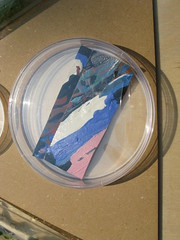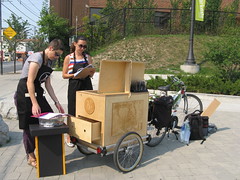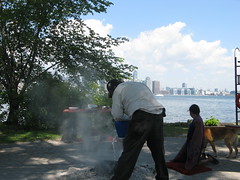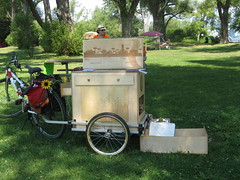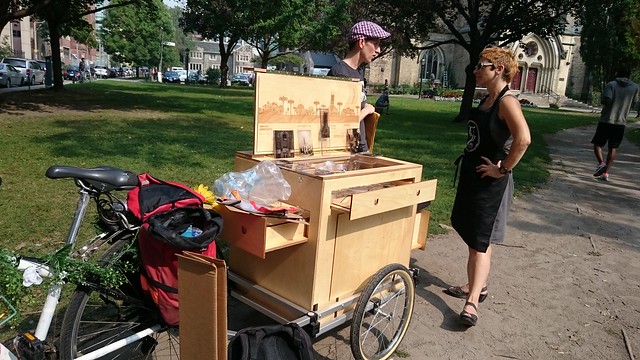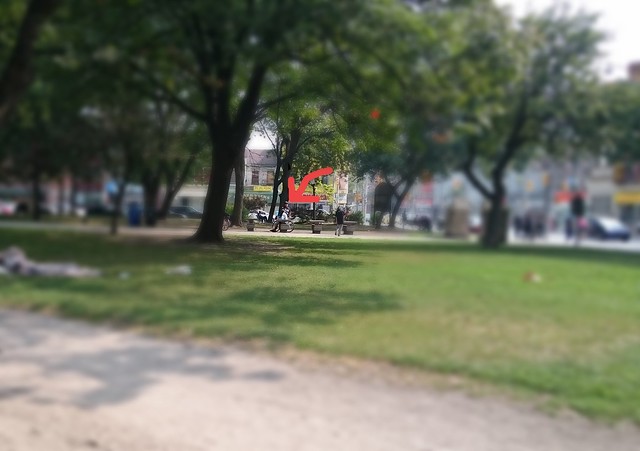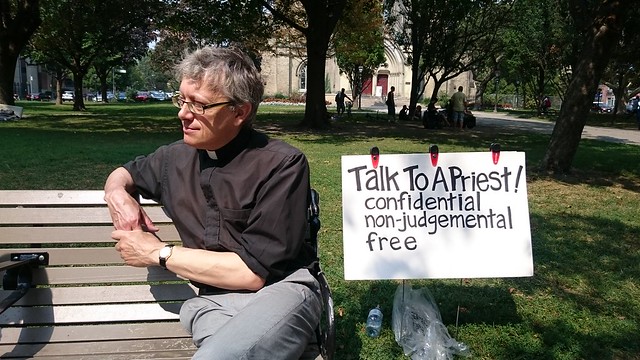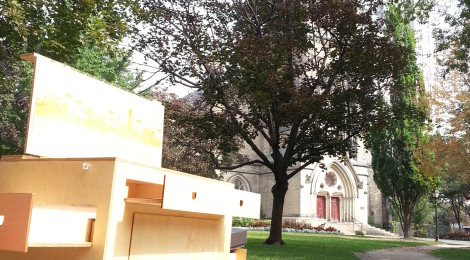
Queen and Church, September 3
Our third day TiP Lab stop took place at Queen and Church, on September 3, 11:00-1:30 pm. We set shop in the park just in front the Metropolitan Church, and were very soon visited by Reverend J. J., the church’s spiritual director and very knowledgeable historian of the area. He’s been supportive of our project from the get go, when we first reached out to him early in June . Indeed, our stop at Queen and Church was in part enabled by his mediation (the Lab stopped on Church grounds, and thus did not require a city permit). 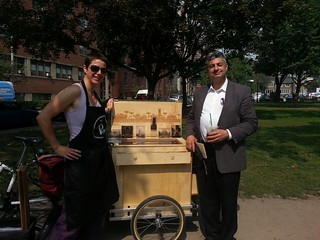
I say “in part”, because the people we felt we needed real permission from were the ones who consider the park their home, and who spend most of their day therein, mostly busy playing chess and figuring out how to survive. We had stopped by a few days before, and talked to the chess players, alerting them to our upcoming performance in the park. A few asked if we were social workers, and when we told them we were artists they asked how much money we made, and if we had plans to distribute any tokens, socks or Tim Hortons cards in exchange for their stories. Most of them, we gathered afterwards, were happy we did not bother them with our lab on the day of the performance. We had tried doing some community outreach in the preceding weeks, but apparently most community programs close shop during the last weeks of August, and we had real trouble coordinating visits before hand.
It was definitely our most intense stop yet. Contrary to Parkdale and Trinity Bellwoods, two neighbourhoods both in a fairly advanced state of gentrification, Queen and Church is a prime laboratory where to witness the aggressive hand of gentrification in full swing, with a number of tensions both very visible and seeping just under the surface.
Our first visitor happened to be a social worker who had been working in the neighbourhood for the last 4 years, and provided us with a wealth of critical information on the changes presently sweeping through the neighbourhood, and the costs attached to it. She pointed out that St. Mike’s hospital current restructuring is almost entirely funded by private money. The new emergency unit will provide two separate entrances, one for the general population, the other for the mentally ill — de facto a code word for the homeless and poor. She talked about the problems of poor coordination among shelters and agencies designed to help those most in need. There are a quite few in the area, all of which are meant to serve a fairly diverse community of people at risk (from the Anishnawbe Health Centre on Queen and Sherbourne to Fred Victor Centre on Queen and Jarvis, to the various church based services nearby). Provincial and federal funding formulas, however, produce a competitive environment among agencies, where what counts is not the quality of care but the number of clients served. Hence clients frequently do not get culturally specific or culturally adequate care because agencies are reluctant to give proper referrals if it means losing them.
P. went on to describe the tension between the”boots” and the “suits” in the neighbourhood, that is, the construction and the office workers sitting uneasily beside each other on street benches at lunch time, or crossing each others’ paths throughout the work day. A disturbing incident happened while we were speaking to her. The police went through the main gate to the park, where the chess tables are, and ticketed the few people sitting there. If you want any further proof of the criminalization of poverty that comes with gentrification, this is a perfect example. P. was not surprised to see the police there, and yet we wondered about the police jurisdiction, since they were on official Church property there. We were lingering on Church property too, but they didn’t come to us…


